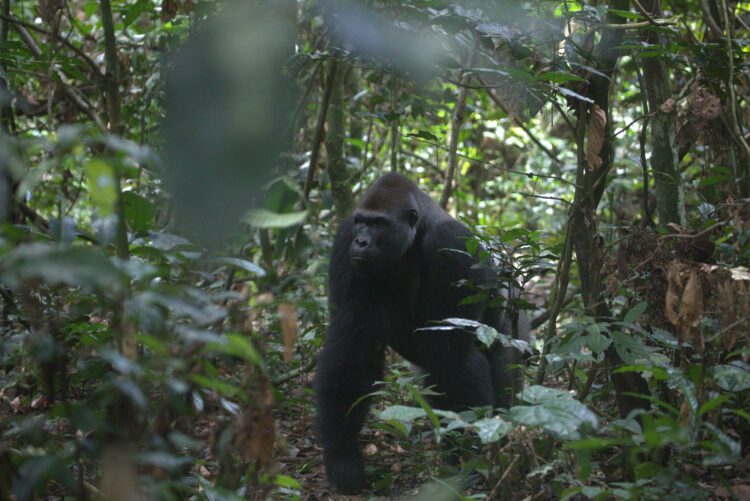Diving Deeper: Goualougo Triangle Ape Project, Part IV
One of the most exciting things about the Goualougo and Djeké Triangles is the fact that the tropical forest ecosystem in the Congo supports both western lowland gorillas and chimpanzees—which, when the Goualougo Triangle Ape Project started to research the area, had probably not encountered humans in any significant way.
In this truly unique part of the world, two ape species live in the same ecosystem with a high diversity of plant and animal life. Such a state of affairs provides some incredible opportunities for researchers, who have been able to really explore the health, behaviors, and social dynamics of apes in the wild.
“It is special,” David Morgan, Ph.D., research fellow at Lincoln Park Zoo and co-director of the Goualougo Triangle Ape Project, says about the location. “This is the only site where you have chimpanzees and gorillas that can be followed on a daily basis.”
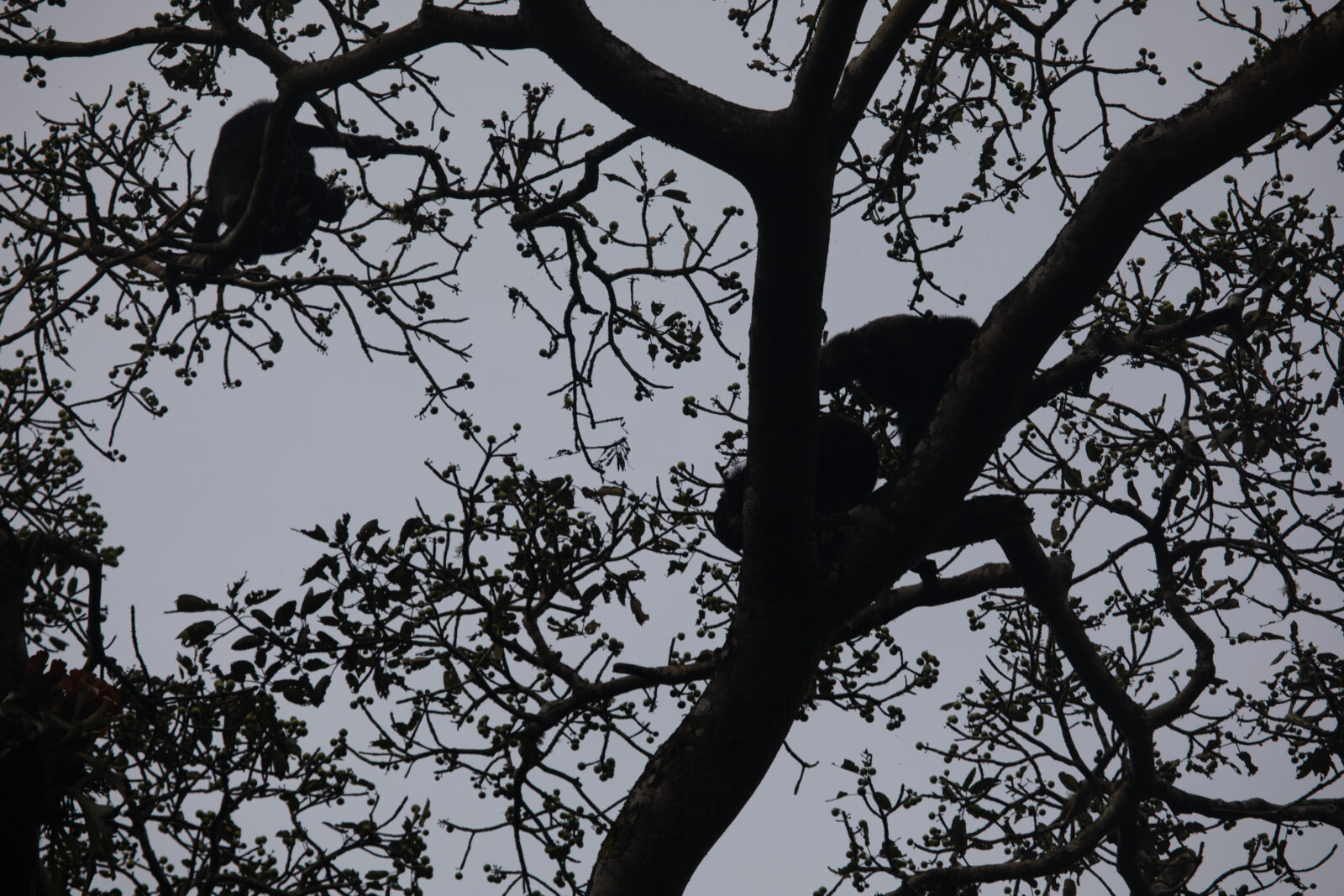
The Path to Acceptance
Because the apes at Goualougo weren’t used to humans when GTAP set up its research camp, one of the first steps to doing some of the amazing research on chimps and gorillas that has come out of this area was to habituate different groups of apes to the presence of humans. Upon arrival, the apes were classified “naïve,” a scientific term that basically means they hadn’t had experience with humans before. Many initially showed curiosity about the new, upright creatures in their midst.
Because of this, teams of Goualougo researchers like Fabrice Thierry Ebombi and Prospèro Teberd have had to develop a process to get apes used to them in a methodical and benign way. Then, researchers can follow them with as little disturbance and impact as possible, making it easier to learn about their needs and risks to their survival. This can also bring important resources into the region and provide value that convinces governments that this area needs to be protected. Ultimately, it helps protect the animals.
It wasn’t all fun and games, though. Habituation is challenging for humans and primates alike, and it has been particularly difficult in the Congo Basin because of high gorilla densities, small group sizes, and thick vegetation. As humans follow the gorilla group with the aim of repeating contacts to gain their confidence, situations at the start of this multi-year process can get tense or even dangerous.
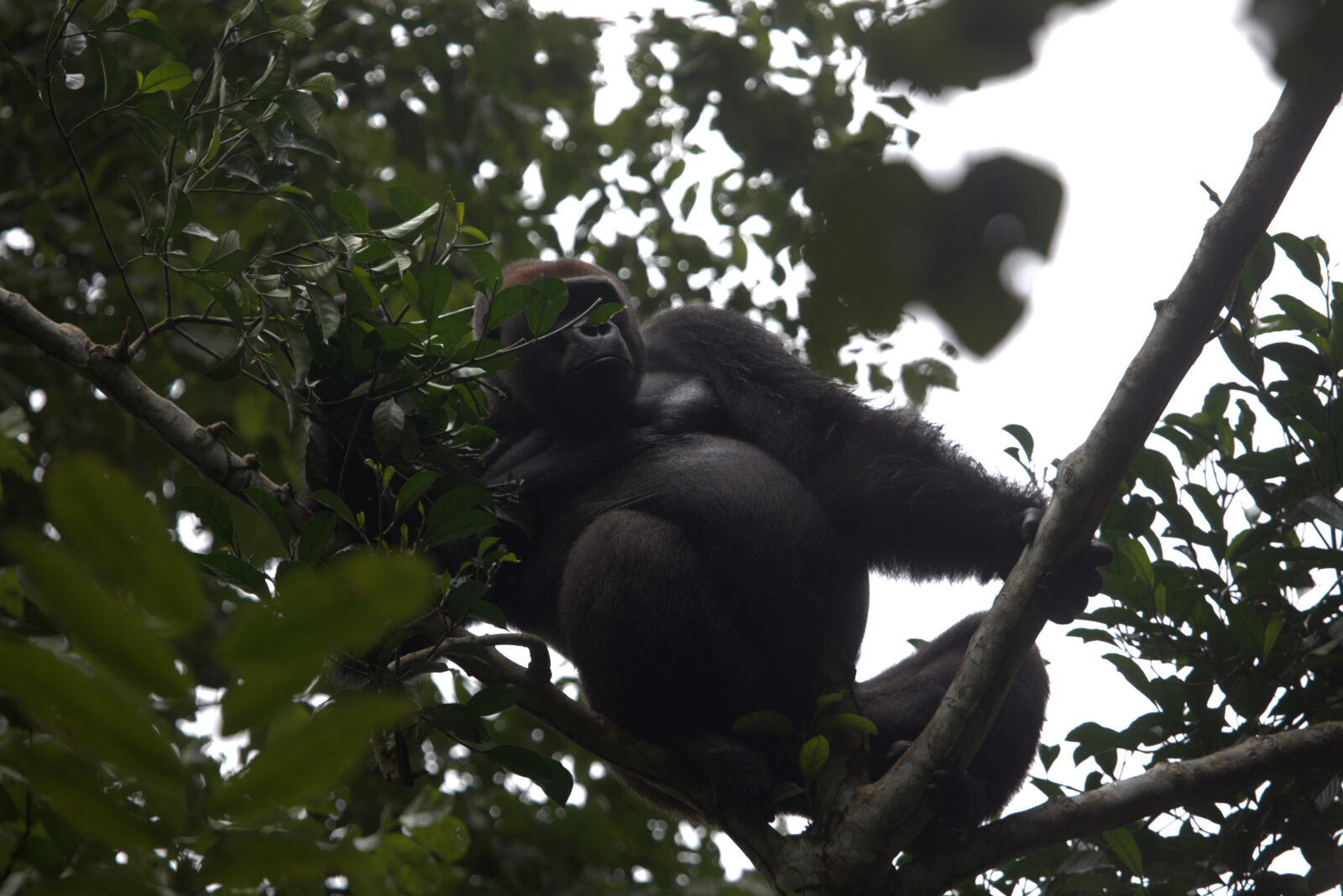
But Morgan and others who reside at the camp have been able to document the habituation process and learn from it. And now they can track the apes at will, both by following them and through the use of cameras. The gorillas act as if humans are not in their midst, which is the goal of habituation.
It turns out that, at least in this part of the Congo, chimpanzees are harder to follow than gorillas, as they travel at a much faster pace. Morgan describes it as a “contact sport” because it requires plenty of motivation to get through the heat and deal with pests such as sweat bees. But tracking these animals every day yields so much good information.
To start with, it allows researchers to experience the primates’ regular lives—their eating times up in the canopy, playtimes, break times, and social strategies. For example, some of the apes who don’t get along with others may feed later to avoid confrontation. Or, interestingly, chimps may use tools to shelter from the rain.
“Chimpanzees and gorillas, they typically just sit in place when it rains. Interestingly enough, the chimpanzees will use rain covers; they’ll take branches and cover themselves. It’s one of the few places that’s ever been documented.”
– David Morgan, Ph.D.
Another behavior not previously documented? Interactions between the species. Gorillas and chimps have been seen feeding from the same tree. And sometimes, the trackers have even seen young chimps playing with young gorillas.
A Legacy of Leadership—The Kingo Group
Properly studying western lowland gorillas requires getting to know the social groups that live in Nouabalé-Ndoki National Park. This includes the Kingo group, which today is considered one of longest-studied gorilla groups in all of Central Africa.
Kingo, the silverback, leads a small group of gorillas at the Mondika campsite. His group was the first in the region to be successfully habituated to the presence of researchers. He was named for his deep, resonant voice, which allowed trackers to identify him without seeing him. Kingo took to the years-long habituation process well—he learned to tolerate trackers, even if they forgot to vocalize in his presence or got too close.
Studying Kingo’s group and other gorillas has required a certain amount of strategy. GTAP teams learned, for example, to walk through the swamps in a way that allowed them to observe gorillas while staying visible to watchful apes. They also determined how to read other signs of their presence, such as investigating the smells, texture, and moisture content of the fruit they’ve consumed and thrown away along their path.
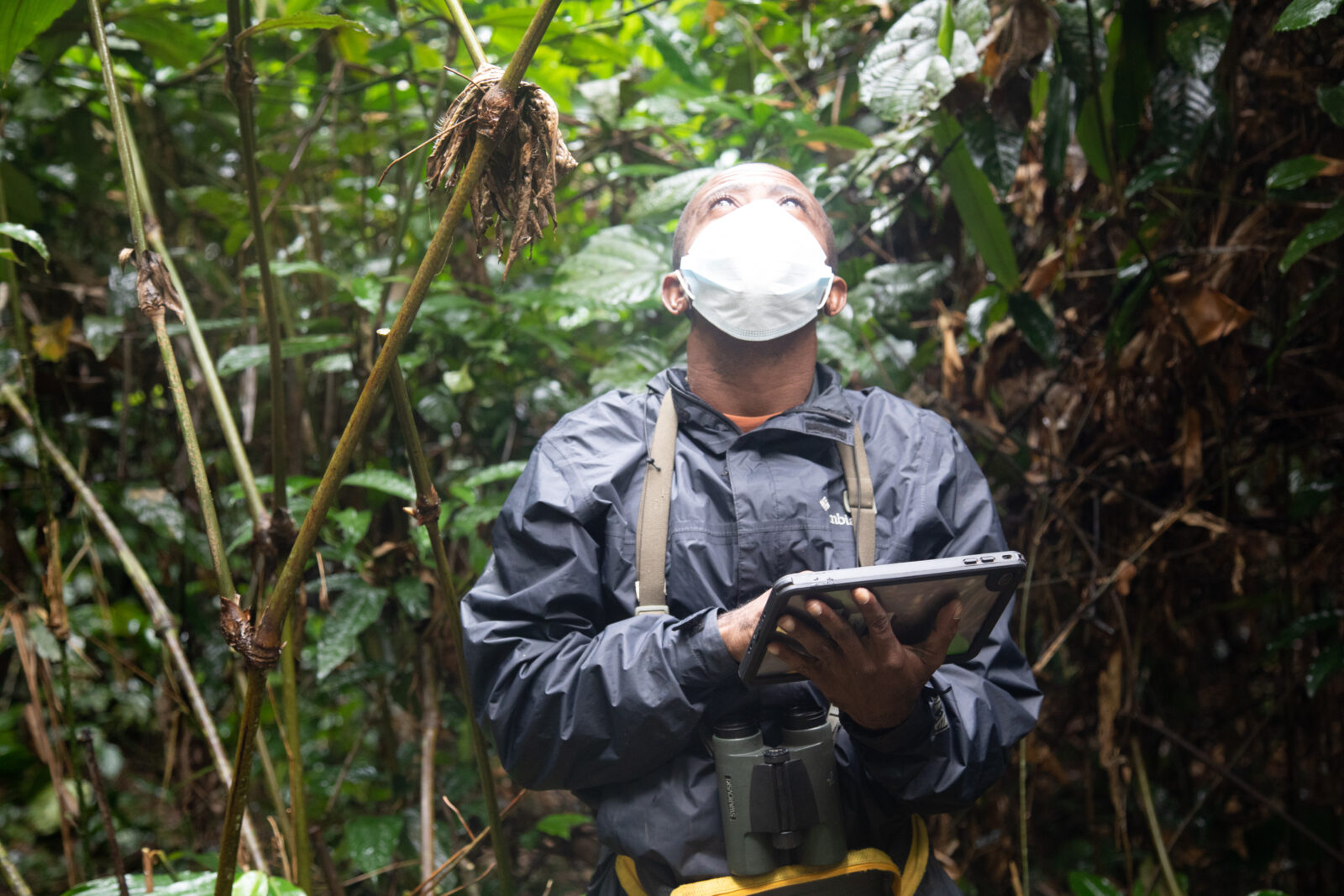
And such processes have allowed researchers to discover where they go to find food, learn what plants they prefer to consume when they are sick, and answer a whole host of questions scientists had about gorilla natural history in this region.
Sadly, now in his mid-40s, Kingo is coming to the end of his natural life.
“We have learned so much from the gorillas in the group, and we continue to learn. Even after Kingo is long gone, we’ll learn about him because of the genetics and his progeny, who are now in other groups,” Morgan says.
Although Kingo’s dominance has waned with age, GTAP researchers have already seen Kingo’s group influence other gorilla societies in a way that has benefited both GTAP and the gorillas.
For one thing, they discovered that a female and her daughter who had left the Kingo group moved to a different, larger group of about 14 apes headed by a younger male they called Mététélé. Because those females had been already habituated as part of Kingo’s group, that made it easier to get the new group of gorillas used to humans, and Mététélé’s group was habituated between 2019 and 2021. Kingo’s legacy continues on.
Luminous Beings—The Moto Group
The Moto group is a large community of chimpanzees, which has included more than 70 individuals at different points. This is the first group of chimps in the region to be habituated to people, starting in 1999.
One of the most fascinating aspects of this group is their skilled, diverse use of tools, which has been documented through observations (both direct and through remote video monitoring) since research began at Goualougo.
Much has been written about the chimps’ use of tools to gather termites. It’s called “ant dipping,” and this behavior consists of using one stick to dig into an ant colony, thus aggravating them, then dipping a second modified stick into it. When the angry insects have started collecting on the second stick, the chimps scoop them up and eat them. This procedure prevents the chimps from getting bitten while they collect large amounts of termites for consumption.
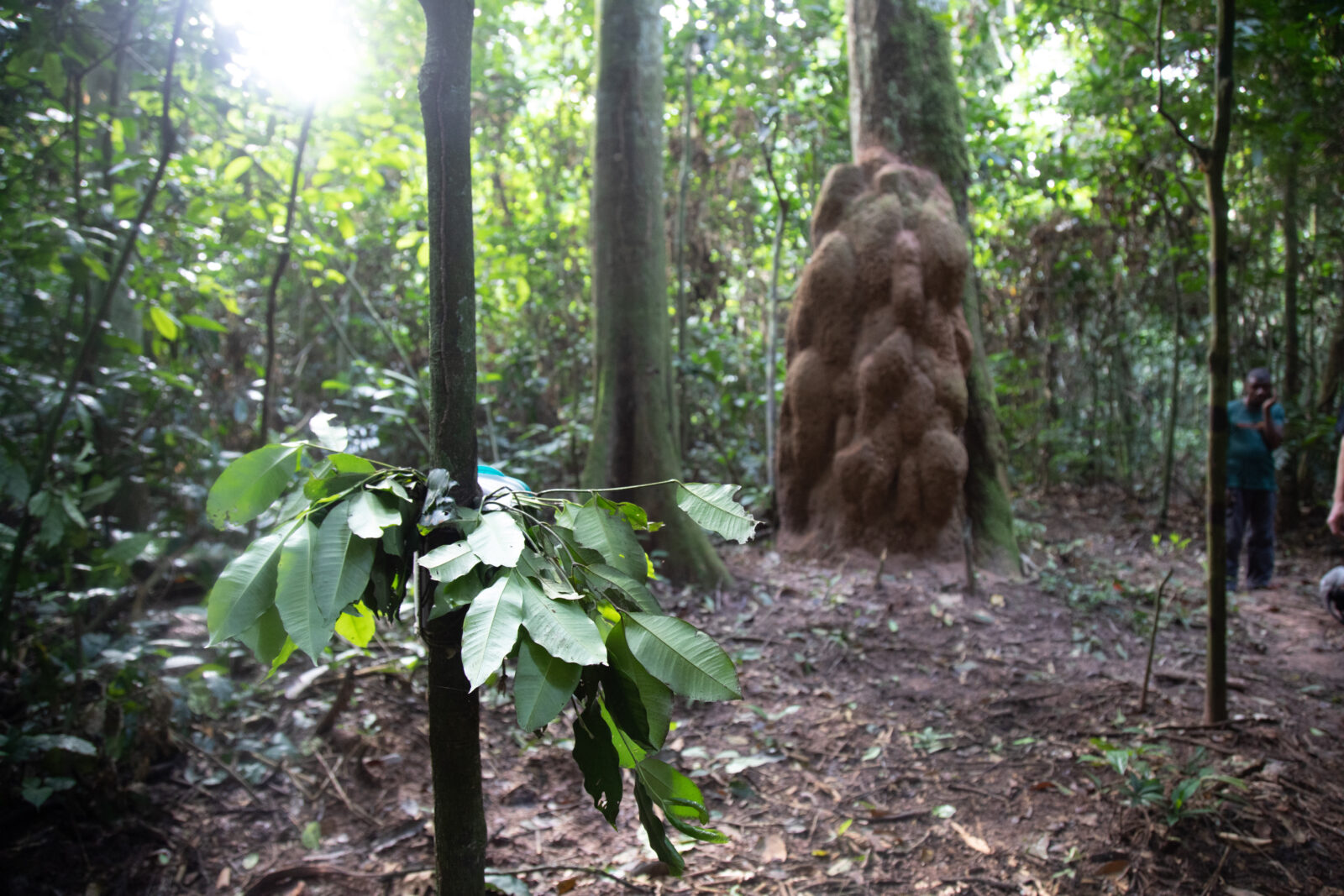
Chimps will also use tools to gather honey, although this is rarer behavior. Although honey gathering is done in different ways in different regions, the chimps in the Congo Basin show a sophisticated level of behavior designed to get past the defenses of different species of bees. Their most common tactic is beehive pounding, in which chimps use a large club to hit and open up a hive, although they have also been known to dip for honey by putting probes into bee nests to extract the sweet substance. A study from Morgan and fellow researcher Crickette Sanz, Ph.D., found that up to five tools were used by a single chimp during one successful attempt to gather honey.
The chimps have even used tools to investigate the cameras that GTAP researchers put out to monitor wildlife. And they improve their knowledge and pass it down to younger generations. For example, one innovation that helped chimps gather more ants was modifying the tool they used to extract ants to have a brush tip. This increased termite-catching efficiency by 10 times.
But this group is special for another reason. They have fire. Well, sort of. In fact, the name of the group means “fire” in the local Lingala language—and it also means “man.”
No, it’s not real fire. It’s a bioluminescent fungus that’s visible at night in this extremely dark environment, glowing green along the forest floor. The Biako people of the Congo call it the “fire of the chimpanzee.”
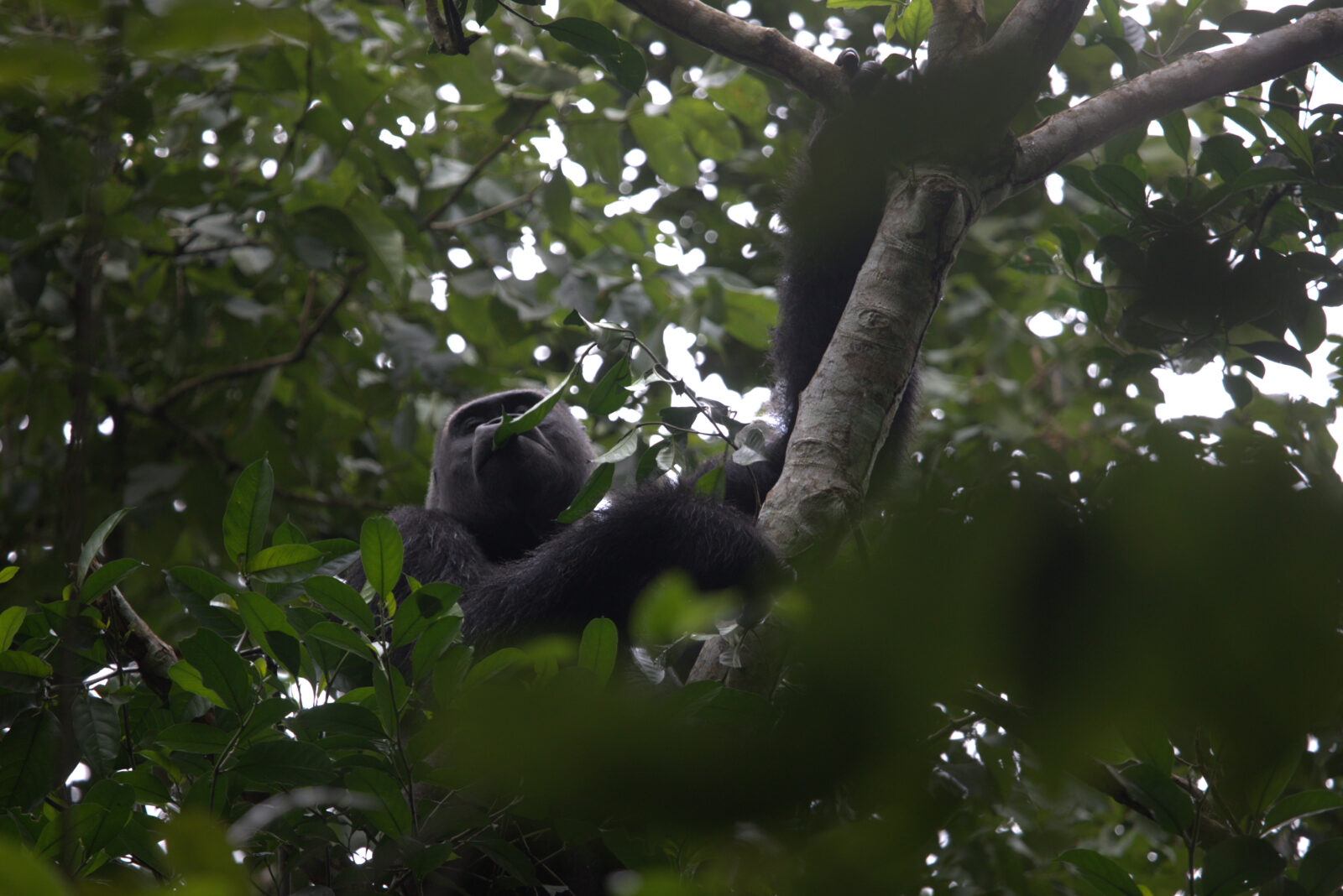
The Apes of Goualougo
Each gorilla and chimpanzee in the Congo Basin is an individual, and it’s helpful for researchers to think of them that way. Giving them names based upon their personalities helps the GTAP staff identify them, remember what they’re called, and also connect with them more easily—but it also makes it harder when something happens to one of them. Getting to know apes and generations of their families also means being involved in their tragedies. And mourning them when they die.
This is, after all, a wild environment, and it’s not unknown for apes to be preyed upon by other animals, such as big cats, or to become sick with diseases that humans can also catch. But the work Lincoln Park Zoo does at Goualougo is important for so many reasons, and it’s the apes that have made that work possible. You might say that, in the end, our goal here is simple: keep the fire of the chimpanzees burning bright.
In our Instagram post below, you can check out some of ape individuals Morgan has been keeping track of over the years, including videos and sketches.
